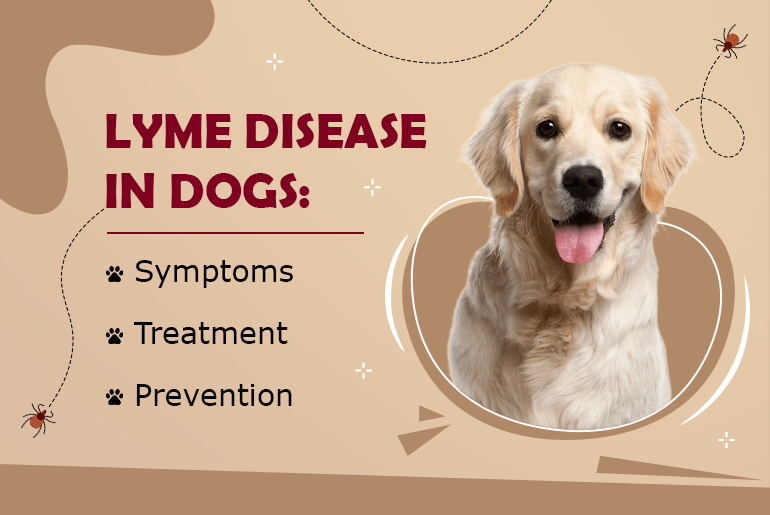Ticks are troublesome for dogs and dog owners. They feed on your dog’s blood, cause itching and scratching, and transmit a number of deadly diseases, including Lyme disease. If left untreated, Lyme disease can cause many other health issues. Therefore, it is important to recognize the symptoms of Lyme disease for prompt and timely treatment. In this comprehensive guide, we will discuss what Lyme disease in dogs is, how it is transmitted, and more.
What is Lyme disease & How it is transmitted to Dogs?
Lyme disease, or Lyme borreliosis, is a bacterial illness transmitted by ticks infected with bacteria of the Borrelia genus, such as Borrelia burgdorferi or sometimes Borrelia mayonii. Lyme disease is most often spread through black-legged ticks or deer ticks in dogs.
Dogs get infected by Lyme disease through tick bites. So, when your dog has a tick infestation, infected ticks feed on its blood and pass the bacteria. Generally, ticks need to be attached to your dog for at least 12 hours to transmit the disease.
Therefore, it is always recommended to check your dog for ticks after coming back from a walk in a wooded area or after a park visit. Even if your dog doesn’t go out much, you should follow a practice of performing regular tick checks.
[Also Read] How To Observe National Lyme Disease Awareness Month?
Are Ticks with Lyme disease Common in the U.S.?

There are more than 90 tick species prevalent in the United States. But not all types of ticks carry the Lyme disease causing bacteria. As mentioned earlier, black-legged tick or deer tick is the primary vector of Lyme disease, and therefore, your dog might not be at a risk of getting Lyme disease if it is infested with other tick species.
Black-legged ticks or deer ticks are commonly found in shady, grassy, and wooded areas, especially in the eastern half of the United States, as far north as Minnesota and as far south as Texas. Tick prevalence in the U.S. may differ according to the season, geographical location, etc.
What are the Symptoms of Lyme disease in Dogs?

Tick infestations in dogs may lead to symptoms like skin reactions, scratching, licking, chewing, etc. If your dog is infected with Lyme disease, it will display additional symptoms like,
- Fever
- Loss of appetite
- Swollen lymph nodes
- Reduced energy
- Intermittent lameness
- Swollen joints
- Pain and discomfort
- Joint stiffness
It is important to note that the symptoms of Lyme disease are not apparent early on in most cases, and it can take up to a few months for the infected dog to show the symptoms. In fact, 7-10% of dogs may not even show any signs of the infection at all. This is why regular vet visits play an important role in maintaining your dog’s health and wellbeing.
[Also Read] Detailed Guide About Common Clinical Symptom Of Lyme Disease In Dogs
What is the Treatment for Lyme disease in Dogs?
Any delays in treatment only worsens the condition, so if Lyme disease is detected, the veterinarian will begin immediate treatment. It is generally treated with a course of antibiotics like doxycycline.
Symptomatic treatment involves painkillers to manage joint pain and stiffness, nutritional support to boost energy levels, and immunosuppressive drugs to manage other health conditions.
Sometimes, the progression of Lyme disease may also damage other parts of the body, including the nervous system, heart, and kidneys. In this case, your veterinarian will recommend treatments to restore function and repair damage to these organs.
How to Prevent Lyme disease in Dogs?
Prevention of Lyme disease in dogs is simple; take active steps to prevent Lyme-disease causing ticks in dogs. Here are some of the major points that will help you prevent Lyme disease:
- Avoid tick infested areas, especially during peak tick season.
- Inspect your dog daily for the presence of ticks.
- If you spot any ticks, remove them immediately.
- Use a tick removal tool or tweezers to remove ticks.
- Ask your veterinarian to conduct thorough tick checks.
- Use an effective flea and tick prevention treatment for your dog.
- Get your dog vaccinated to prevent it from getting Lyme disease.





